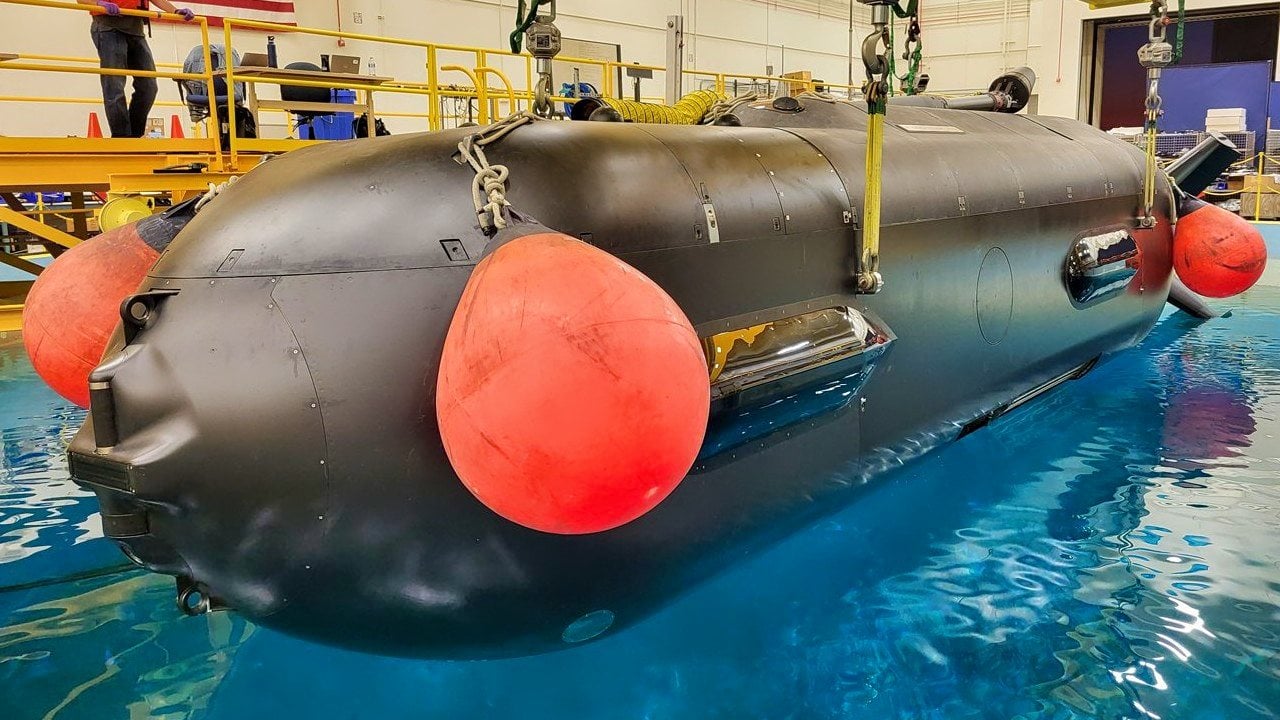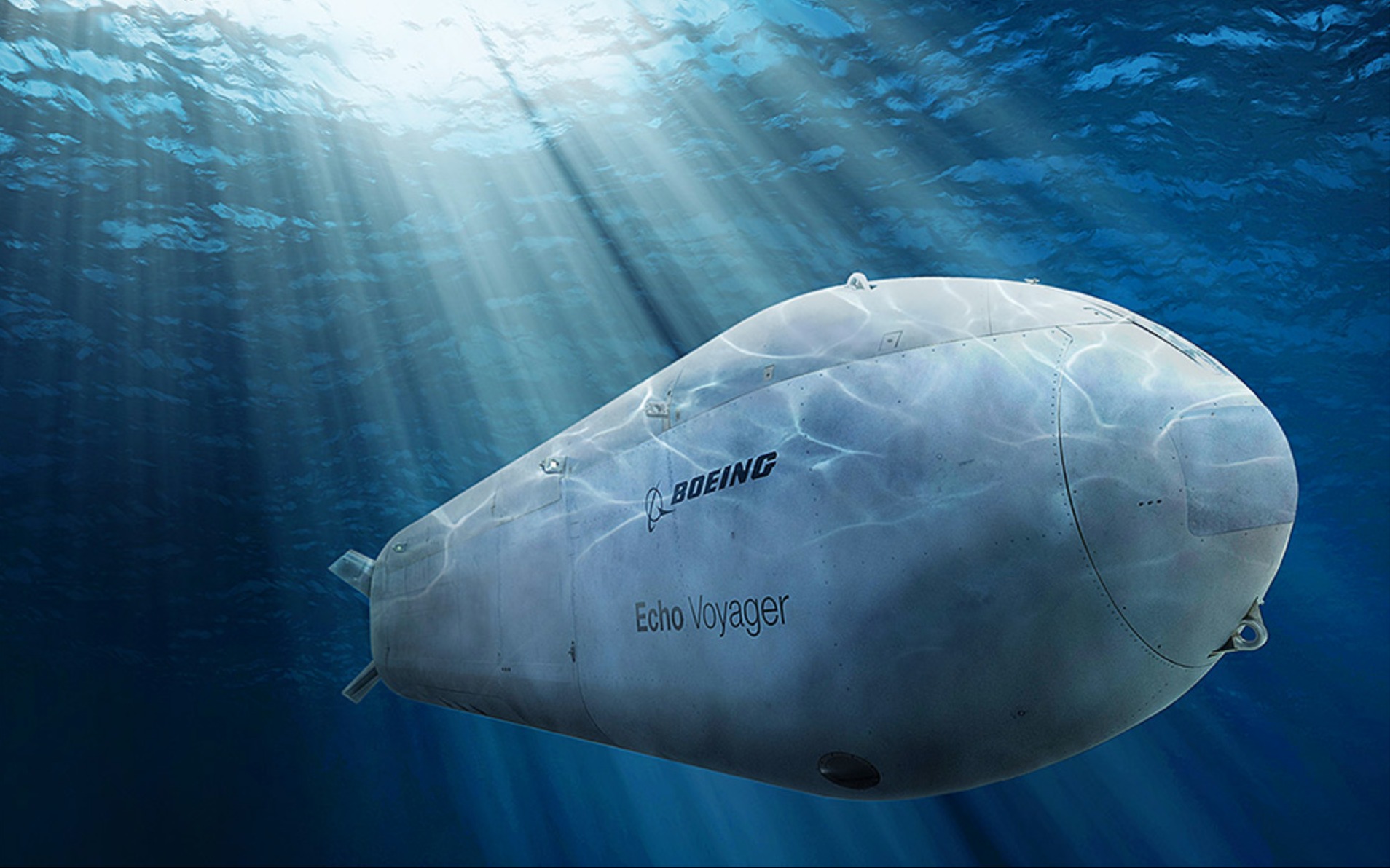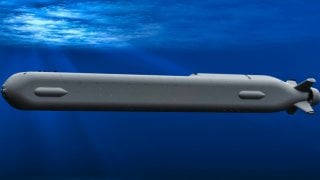The U.S. Navy’s Orca Drone Ship: A Game-Changer for Mine Warfare Against China
The U.S. Navy’s new Orca undersea drone is the size of a Mac truck and could be a rapid capability for deterring China. It could be a real 'underwater' game-changer.
Navy Drone Ship Orca is a Mac Truck for Mine Warfare: The Navy’s new Orca undersea drone is the size of a Mac truck and could be a rapid capability for deterring China.
The Extra Large Unmanned Underwater Vehicle (XLUUV,) fittingly known as Orca, is a fifty-one-foot autonomous submarine that can carry out clandestine missions like minelaying. The first Orca began testing in 2023 and late last month, the second Orca hit the water for sea acceptance testing off the coast of Southern California.
Seen side by side, the first two Orcas radiate mystery and menace. The Navy is evaluating several unmanned underwater vehicles for various missions, including large vehicles such as the sleek Manta.
But none match Orca for size and military capability.
And just in time, as the Navy is rushing to be at high readiness by 2027 when China’s Xi Jinping has ordered his forces to be ready to attack Taiwan.
The focus on 2027 has taken hold across the military budgets since it was first described as the Davidson window. “President Xi has instructed the People’s Liberation Army (PLA), the Chinese military leadership to be ready by 2027 to invade Taiwan,” CIA Director William Burns stated in 2023.
“They are on a wartime footing,” Chief of Naval Operations Admiral Lisa Franchetti said of China during a talk at the Center for Strategic and International Studies (CSIS) in September.
If the CNO is serious about adding capability, Orca is an option. Accelerating the production of large ships is almost impossible in a tight timeframe. Only a few Navy programs can speed up to deliver in quantity by 2027. One of these is Orca.
The program, which is the Navy’s largest unmanned vehicle, started as a joint emergent urgent need requested by U.S. Indo-Pacific Command for an underwater mine-laying vessel. Boeing went on contract in 2019 and launched the first Orca prototype in 2023. Four more Orcas are under construction in Huntington Beach, California. The Orca hot production line would enable the Navy to add Orcas quickly before 2027.
The diesel-powered Orca is almost the size of an eighteen-wheeler, with thirty-four feet of space dedicated to payload. Think of Orca as a giant, undersea truck with limitless missions and a reported range of 6500 nautical miles. It’s by far the biggest undersea drone ship in the U.S. Navy. Recent tests demonstrated forty-eight hours of autonomous operations covering over 120 nautical miles.

Orca has numerous uses in deterring China. Each Orca will be equipped for clandestine placing of sea mines if a crisis escalates. Taiwan’s shallow waters and treacherous coastline are prime territory for mine warfare and, “a low-cost way to interfere with China’s military plans, increasing the risk of operational failure,” noted a trio of analysts.
Just as important, the U.S. Navy says Orca can perform complicated undersea mining operations that would otherwise be tasked to a manned submarine. Orca has a long-endurance capability, allowing it to operate autonomously for extended periods in challenging undersea environments. Its cost is much less than a manned platform and the risk to sailors is lower.
As CNO Franchetti said at CSIS, “We know we need to adopt robotic, cheaper autonomous technologies to help us complement and extend the reach and lethality of our manned fleet.”
Orca also has other potential uses, such as hunting Chinese submarines. The American strategy is counting on an undersea advantage to neutralize both Chinese conventional and nuclear submarine capabilities. China’s nuclear ballistic missile submarines are a growing problem. China deployed its new JL-3 (CH-SS-N-20) submarine-launched ballistic missile aboard the Type-094 submarines in 2022.

The extended range of that missile could allow Chinese submarines to lurk in forward locations and put targets in the continental United States within reach. An autonomous system like Orca lying in wait could make that much harder for China to accomplish.
All these capabilities enable Orca to assist the submarine force, freeing up manned submarines for other tasks. Orcas could be in use from the High North of the Arctic to the South China Seas, in which case the U.S. Navy is going to need more than five or six of them.

“China wants its navy to be capable of acting as part of an anti-access/area-denial (A2/AD) force, a force that can deter U.S. intervention in a conflict in China’s near-seas region over Taiwan or some other issue or failing that, delay the arrival or reduce the effectiveness of intervening U.S. forces,” concluded Ron O’Rourke of the Congressional Research Service. The U.S. needs to prioritize its undersea advantage to nix Xi Jinping’s timeline.
For Franchetti, it’s personal. “I’m going to be CNO in 2027,” Franchetti said. “So, I am compelled to do more, and do more faster,” she concluded.
Adding more Orcas to the fleet would accomplish both tasks. “What we are doing now in support of unmanned vehicles is key to the future success of our great Navy,” Commander Timothy Rochholz, the commanding officer, of Unmanned Undersea Vehicle (UUV) Flotilla Three at Naval Base Ventura County Port Hueneme, pointed out. “We must accomplish the mission our commanders ask of us, deliver Orca to the fleet, ready to fight, as soon as possible – that is our charge.”
About the Author:
Dr. Rebecca Grant is a national security analyst and vice president, of defense programs for the Lexington Institute, a nonprofit public-policy research organization in Arlington, Virginia. She has held positions at the Pentagon, in the private sector and has led an aerospace and defense consultancy. Follow her on Twitter at @rebeccagrantdc.
Image Credit: Creative Commons and/or Shutterstock.


